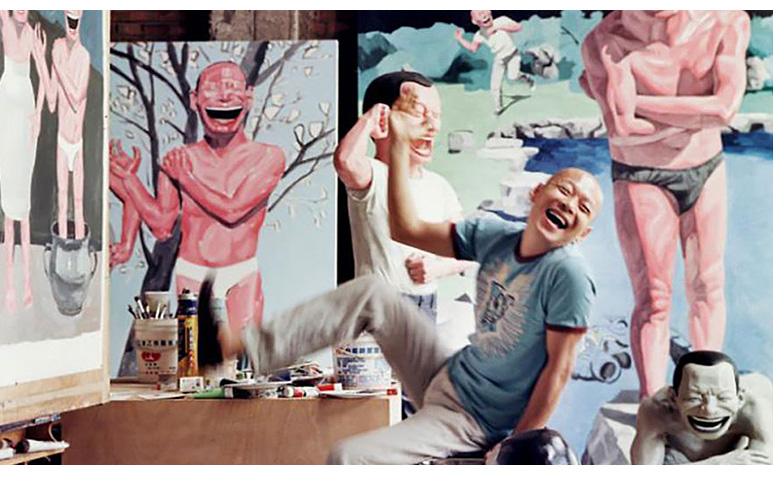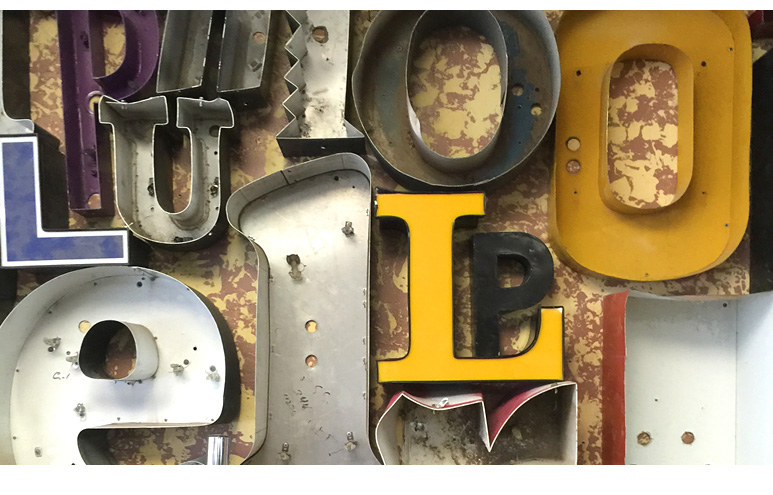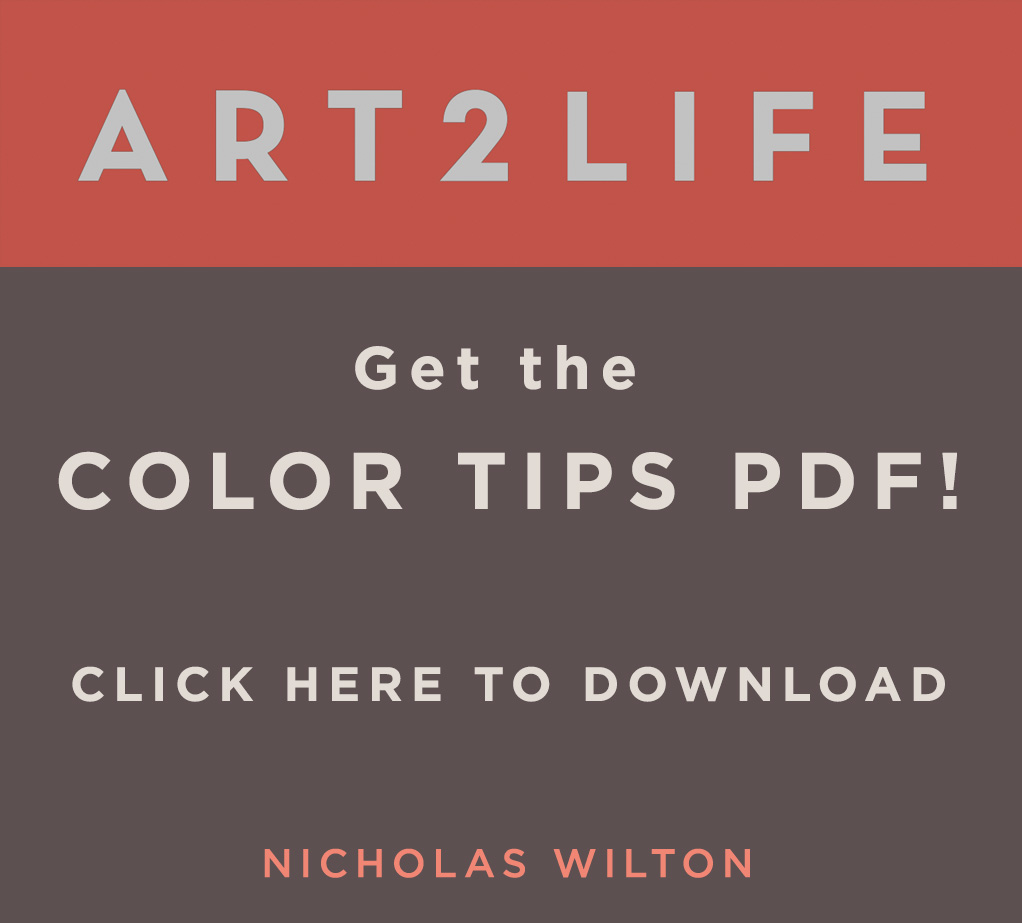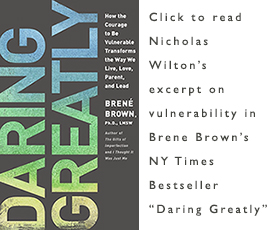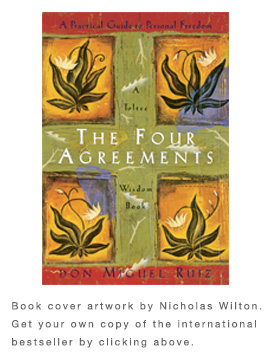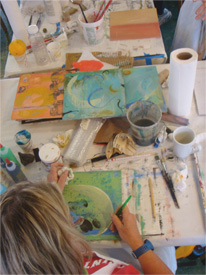15 Positive Ideas that can Help Your Art Practice – Part One
There are many challenges the artist must face to pull off a consistent art practice. But today I don’t want to talk about those. Besides, they pale in comparison to these positive ideas and truths regarding art making that I have come to embrace and believe. When I am not making my art, I am busy teaching these principles in workshops, mentorships, blogging and other programs. I have found that these points – when even slightly embraced – can dramatically shift, not just your outlook, but also your art and then ultimately your life.
It has been my experience, I am happy to report, that these are true. Today I would like to focus on the first eight…
8 Positive Points on Art Making
1 Intention actually changes what comes across your path. Saying out loud what you want helps it become so.
2 Artists can create any kind of art and build careers in any direction they choose.
3 The process of art making can become an enjoyable, creative, and financially sustaining practice.
4 All success is taught, especially in art. Artists realize this and no longer invalidate themselves or their work because they simply have not been given the information they need to achieve their goals.
5 Art does not fit in any particular category. It is by its very nature limitless and those that make it are inspired because of this fact. It excludes no one.
6 Making personal, authentic art gives the rest of the world permission to do the same.
7 People will collect your art because it makes them feel and see the world in a way they have never before. Your work transports them.
8 Sharing your art and what you know with those not as far along helps make you a better artist. There is more than enough for everyone. There is abundance for those who give.
I know for many of you these are familiar but possibly there are a couple in here that are not. If so, then hopefully you will feel just slightly more buoyant, slightly more energized as a result of discovering them.
When I read these, it reminds me of the tremendous possibilities available for not just me, but for all artists.
It is an amazing time in history to be an artist.
Do all these 8 points resonate with you? What are some of yours? I would love to improve this list with your help. Next week I will share with you the remaining 7 points.
Have a great rest of the week!
In gratitude, Nicholas
How to Stop Avoiding Your Art Practice
We all procrastinate.
Some days it feels harder to find the time to make your art.
I know this is the case for me.
Here is a little way I have found to overcome this problem.
It just might help you too.
Let me know if this rings true – or not true at all – for your practice.
In gratitude, Nicholas
Finding the Value of your Art
There is this really cool shop in Portland that I accidentally wandered into last week. At first blush it just looks like a metal junk shop but peering in the window as I went past, I realized that this just wasn’t any old junk shop. This shop was only selling old metal letters, the kind that you always see on top of buildings. Think of the letters that make up the words Wells Fargo Bank, Ace Cleaning, Popeye’s, or Safeway, etc. When buildings get torn down so do these old signs. Now imagine of all those individual letters all separated, gathered from various junkyards and randomly arranged upon a wall.
This is what this store looked like. The first time I passed it was closed and but it was so intriguing I just had to go back a second time. And this time it was open. Turns out the owner – a heavy set, super friendly guy in a faded orange baseball cap – used to just sell anything old and interesting. Originally he had only 5 letters. He hung them on the wall. They didn’t get much attention till one day a customer connected him with a guy in New Mexico who had a gazillion of these old sign letters. He drove down there and returned with a pick up truck full of them.
After hanging about a hundred on the wall and moving a lot of the other metal junk stuff to he back of the shop, people could clearly see this alphabet wall. The owner does not consider himself an artist, nor is he particularly interested in typography. He just hung them all up randomly on the wall. What happened next surprised him.
People would come in, stand in front of the wall and visually try to make sense of all these fragments of letters. People would read into them what they wanted. Accidentally he spelled “PIG” and he ended up selling about 5 sets of these. People would find their initials. The wall was just kind of suggesting all kinds of associations for anyone who took the time to look. Everyone would ask him what he meant to say, but for him it was just absolutely random. He just hung them up without any thought at all.
Despite this, people would still just find their own meaning in what they saw or would re-arrange them into their own words. And then much to his surprise people would buy them. He sells about 50 letters a week.
This all kind of reminded me about how when we make our own art we often wonder whether people will in fact get or understand the meaning we intend. I know this is true for me. We put so much thought into what we make that it seems important everyone, or at least most everyone, gets it. But now I am not so sure this is so important anymore.
I know it matters to me to stay focused on the thinking behind my art, especially as I am making it. But maybe it doesn’t matter that much, if after it leaves my studio, people understand it in the particular way I meant. If they connect with it in any way seems to be a far more likely outcome.
When I let go – even just a little – about worrying whether the world will understand exactly what I am making, I do feel slightly concerned. This feeling, however, is soon followed by a sense of liberation. It feels similar to when, finally, in your studio you get to that point where you can actually say to yourself that you really don’t really care what anyone thinks about what you are making right now. I am doing this for me because it just feels right. When this occurs, suddenly your art making becomes recharged, the possibilities are once again infinite, and your once smallish studio suddenly becomes significantly bigger.
In the end maybe the value you receive from your Art is given to you when you make it. Maybe as the artists, we don’t have to worry so much about how everyone else will receive theirs. We are all so totally different from one another. People will find meaning and value in your work in their own particular way. To me, this feels perfectly ok.
Right before I left the shop I couldn’t resist asking him if there was one word above all others that people would create and then buy from his wall. He said actually there were two. “Eat” and “Love.”
Maybe we are not so different from one another after all.
The store is called St. Salvage located at 3576 SE Division St Portland, OR 97202. There is no website.
In gratitude, Nicholas
Make 2016 The Best For Your Art
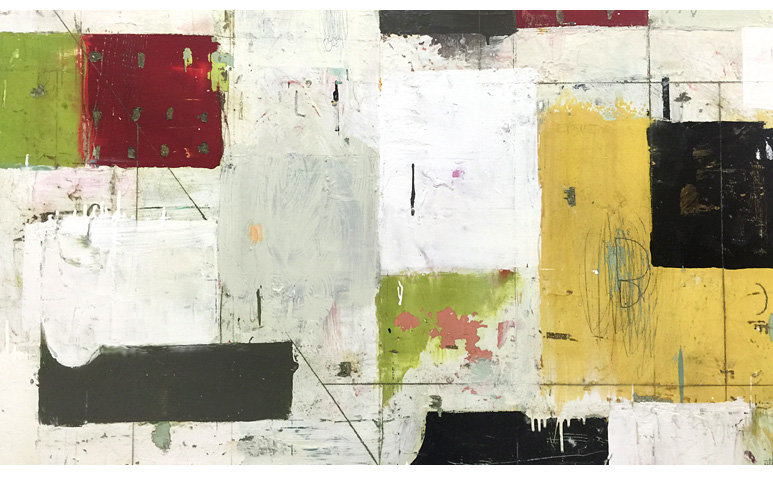 This could be the best year for your Art. We all have been told we need to write down our New Years Resolutions. This never worked for me. It just wasn’t enough. In time I would just forget what I wrote down. Over the years I have tried different ways to improve my art…
This could be the best year for your Art. We all have been told we need to write down our New Years Resolutions. This never worked for me. It just wasn’t enough. In time I would just forget what I wrote down. Over the years I have tried different ways to improve my art…
I know for sure I can’t work harder than I am already am, so that is not an option for me.
I know that if I just drift along hoping my work will dramatically improve, well that has not worked either. Things, at least for me, just don’t magically manifest. There always is some measure of intention, some degree of effort behind the scenes to positive change.
The only thing that has helped me has not so much to do with the actual art making but, rather, design. This is a great alternative to driving yourself harder, as well as aimlessly drifting hoping your art will dramatically improve. I am not talking about designing your art work but rather, designing the very thing that creates your Art. Your Art Practice.
Depending upon your Art Practice’s vibrancy and sustainability will, in the end, be the primary factor in dramatically improving your art. Get this right and your Art will take huge strides this year. But what is right? And what is right for you? Of course it is personal, but spending some time now crafting the ideal art practice, what it looks like, how it integrates in your life will have huge payoffs this year.
The question you need to ask yourself is “What is the best situation, the best conditions for me to make Art?’
I am going to give you 5 of the conditions that I have integrated in to my art practice that have helped me significantly. These might not be yours but they might very well be helpful. All of these, in one form of another I learned from others…
1 Schedule your studio time every week.
Treat your art practice as important as self care, because actually it is. We all know when our art is going well how fantastic you feel? So schedule it in your week. See where you can place studio time during your week and then put it on the calendar. For me, my art making is so important that I try to fit the rest of my life around this fact. After all, I know that if I have a vibrant art practice in place I have a tremendous amount of energy and enthusiasm for the rest of my life.
2 Show up little but often.
Don’t worry about not having enough time to spend 5 hours making art every day or even one day. Most people can’t either, but that aside, don’t let this fact discourage you. Come in for 30 minutes if that is all you have. I always try and do something as it always keeps the conversation going in my mind about my Art. You will still learn something new every time you make art. Even for 20 minutes. And that will keep you coming back for more.
3 Control your environment while you create.
For whatever time you have in the studio, give it to yourself fully. Try to not answer the phone, send texts, visit the computer for solid chunks of time. Think of the art making time as a total break, a mini vacation- from everything. All the chatter of the world can actually stop if you choose to make it so. When you are fully present there is a high probability that the art you make will be more like you. Authenticity is a hallmark of great art and your art can never have enough.
4 Re dedicate to only making what you love.
Time is the one thing in my life that is always lessening. Because of this, my time is becoming more and more valuable. I always take the New Year to really make sure that whatever time I am spending in my studio, that it I am spending it making art that I truly want to make. If it feels slightly like a yawn, stop immediately. Letting go of what others think or expect, what might sell or not, what is familiar or not, will allow you to create more authentically again and set you on course to making Art like you never have before.
5 Allow more, not less, to come in.
In your life, gather anything that you see or find that resonates with you and bring that, in some form or another, into your studio. It could be a photo you have seen or a print from something online or just an object found. Whatever it is, just having it present when you are making will influence and possibly shift your current creation. Don’t feel you have to be like an assembly line and always make the same thing in the same way. Let it change and use whatever is directly around you to help create that change.
Inspiration comes from experiencing change and newness. And in turn, creativity naturally results from feeling inspired… which ultimately leads to making powerful art.
Paying attention this year to putting a joyful, inspiring process of art making in your life will allow your Art to take off. Create the conditions for you’re creative success.
And yes, this is the year. Game on.
The Thing That Can Change Everything For You
Do you ever notice how even though you plan things out, even though you think you know what you are going to do, that sometimes it seems like the universe just has a different plan for you? I have come to realize that this little idea or actually this little truth is an integral part of art making. The surprises, the “I never thought I would make art like this” moments are what, in the end, keep all of us coming back for more. You just never know, even though you think you know, even though you plan it all out, what exactly is going to happen next.
Experiencing someone else’s art, taking a right turn instead of a left or simply giving up out of frustration; these seemingly insignificant moments sometimes set us upon a direction, help crystalize where we are headed. These moments, these pivots are rare but they always come. We just never know when.
Today I would like to share the story of one of these moments. Like all of them, this one was unexpected and it altered the course, the path of art making for a good dozen years. This particular moment was not mine.
It was my father’s, Clifford Wilton. In his words:
“In 1991, my wife Ann and I built a house near Aspen, Colorado. We spent a strenuous seven months mid-wifing the house into existence and felt we needed a break. Sculpting and painting for a week? Perfect.
Ann signed up for a marble carving class in the mountain village of Marble, and I joined a painting group, also in Marble. I spent a day digging out my painting stuff from storage, tubes and cans of oil paint, a home-made easel, a couple of canvases and a TV table to support a large glass palate. It was a good thing, I remember thinking, that I would not have to walk far from my car.
I met my new friends for a day of painting from nature, plein-air. The group of eight or nine artists gravitated to the center of the little town. There wasn’t much there, a few houses and a small church. It was a slab sided structure, with lots of whitewashed clapboard. The group drew up their little stools around the church and set to work, “plein-airing” away.
My artistic senses rebelled against such an uninspiring subject so I gathered up my gear and set off down the hill toward an aspen grove. It was hard going. The grove became a forest and was getting more and more dense. My load was getting heavier and more cumbersome.
After about half a mile I came across an old Chevy pickup truck in its final resting place. Thirty-five years before it had been lustrous red. Now, in the dappled sunlight it had weathered to a greyish pink. Its hood was sprung, lights smashed and the tires had not seen air, plein or otherwise, for years.
In a flash I knew I had found my subject. I had found my inspiration.
In the months I spent in the Colorado high country, I formed a defiant and somewhat contrary view on the much-vaunted Colorado landscape. The snow-capped mountains were certainly majestic, the valleys rich and green with rushing mountain streams.
But I became aware of a much different countryside. Dotted throughout the valleys were rural settlements where families lived surrounded by an accumulation of junked cars, trucks, and rusted farm machinery. Once, all that stuff had been new, often even attracting one’s neighbour’s admiration for each new acquisition.
Now, it was just sad. Someone, I felt, should acknowledge this man-made landscape. Someone should create a memorial to these metallic graveyards. That old Chevy truck I stumbled across in the woods that day made me that someone.
For several years after, I sought out junker cars and painted them. The years of decay, the slip from manufactured iron to rust abstracted their forms. Which in turn, led my work into a semi abstraction too. And then, gradually, many years after painting that first Chevy truck my paintings became wholly abstract.
Ann and I eventually moved to Oregon and my interest in the Colorado landscape faded. I don’t know what my work would have been like today if I had not taken that path into the woods that day. It was, looking back, how I found my way from plein-air representation to large, entirely abstract studio paintings. Today, my art is no longer derived from what I see outside of myself, but is drawn entirely from what I see within. And for this I am truly grateful.”
My father, always an inspiration to me, continues to paint and more recently write. He resides in Ashland Oregon with his wife Ann. The blog image above is one of Cliff’s junker car studies. Oil on board, 5” x 7.” To see more of his available paintings email directly Cliff at [email protected]
What has been your recent inspiration? Did you know it was coming?
Inspiringly,
Nicholas and Clifford Wilton
Please Steal My Art
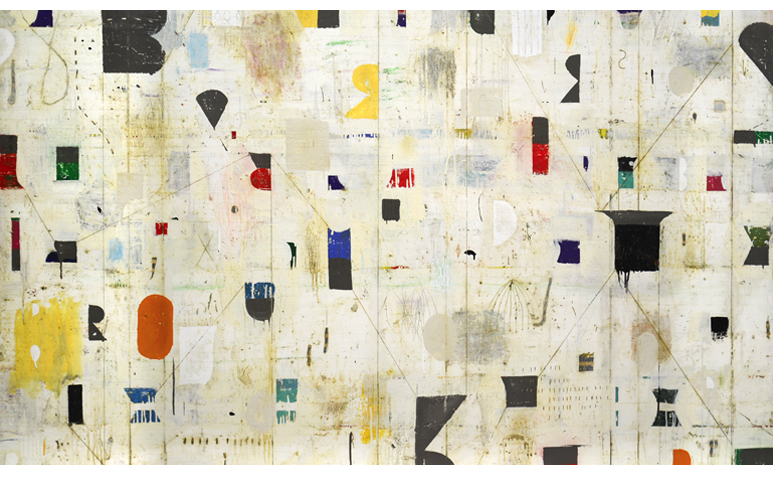 It is not clear exactly who said “Good artists copy, but great artists steal.” It might have been Picasso. The poet TS Eliot wrote something very similar in 1920. Regardless, the quote brings to the forefront an idea, a concept that I am consistently highlighting in all my Art2Life programs.
It is not clear exactly who said “Good artists copy, but great artists steal.” It might have been Picasso. The poet TS Eliot wrote something very similar in 1920. Regardless, the quote brings to the forefront an idea, a concept that I am consistently highlighting in all my Art2Life programs.
It has to do with creating your Art from looking primarily inside of yourself instead of outside of yourself. I teach a lot of workshops and I understand and appreciate the temporary influence a teacher’s work may have upon a students. While this is to be expected, I am not at all interested in having this be the final result for my students.
When someone is copying someone else’s art, it just means that they are looking outside of themselves more than they are looking within. In the beginning everyone is trying to figure out what kind of Art it is exactly they can make. Everyone is influenced. I surely was and I too copied people’s work because I so badly wanted to create work that I loved. I couldn’t see my own work at that point, as it was still unmade. It is far easier and certainly more visually obvious to look at what others – such as your teachers, past artists, those you admire – are making for the answers instead of where the true answers lay: within yourself.
Everyone – and I really mean everyone – is capable of discovering what their own creativity can create if they are willing to take the time to investigate. Every person walking the Earth is utterly unique. No 2 people are the same. However, to really visually represent this difference one must pay attention to one’s self and not so much to what others are doing.
If you are copying it means you are looking over your shoulder at someone else’s art instead of your own. If, on the other hand, you steal someone art then this is something entirely different. Taking inspiration, taking colors, design, whatever and then using it, modifying it as your own actually transforms it into something personal. What matters in the end is your thinking. Are you inside or outside of yourself when making Art?
It is always challenging to find your own expression. It is mired with half starts, uncertainties and can, over time, wear you down, particularly when your art does not match your expectations.
Looking back now I so clearly can remember all the firsts, all the fun and even the pain, and certainly all the tremendous “ah ha!” moments I found along the way. This is what it is all about. The life of an artist is an unfolding, a peeling away of layers… layers of self-doubt, ego, dreams, hopes and always renewed optimism and faith.
It turns out that the practice of finding your own Art is ultimately the practice of finding your own Life. And finding that makes everything else pale in comparison. I want to say thank you, at this years end, to all my readers, all the artists and creatives who I have become connected to this past year. I feel especially grateful to be part of this tribe.
I am so excited about 2016 and all that is coming…. Let’s do this art thing!
Happy Holidays!
How to Price Your Art
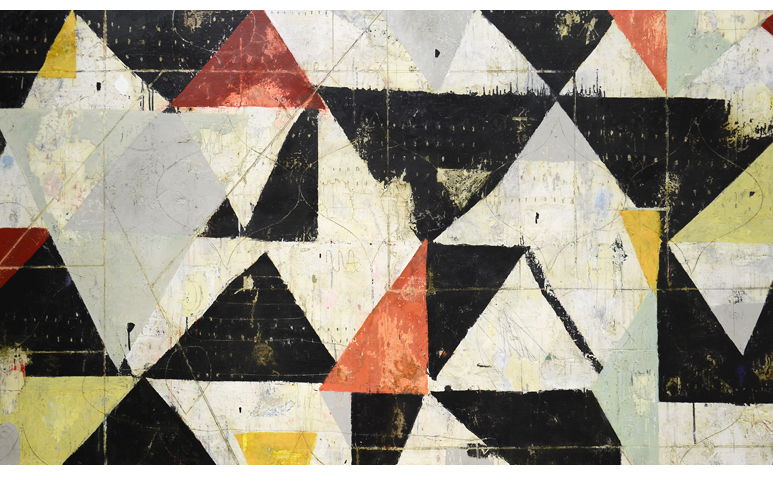 It is challenging to figure out how to price your Art, especially when you haven’t sold your art before. Ultimately it is the artist who assigns value to their art. However, putting too low a price or – even worse – too high a price on your art can sabotage the whole process of creating demand and sales of your art.
It is challenging to figure out how to price your Art, especially when you haven’t sold your art before. Ultimately it is the artist who assigns value to their art. However, putting too low a price or – even worse – too high a price on your art can sabotage the whole process of creating demand and sales of your art.
Here are a few key points to think about when pricing your art. Especially for the first time….
Look at what price similar art is selling for.
Even if you are starting out, you want your art to be relatively priced the same as art that is in similar markets. If this is your first time selling your work and you are just trying to establish a history of selling then it is ok to be a bit under the market price, but only by just a little. Your art will sell mostly because the buyer likes what the art looks like, not because it is the best deal.
Prices only go up when sales go up.
The ideal situation is to have a demand for your work. If most of your work is selling, even if it is a low price then this is great. You can, over time, increase the price of your work. Do this slowly; maybe 5% a year, keeping in mind that the most important condition to maintain is the brisk sale of your art. Raising the prices too high, too soon, can absolutely stall this condition.
Base prices on size
Create a document that lists your prices for all the sizes of art that you sell. Prices are related to the size of your art. The bigger the art is, the higher the price. Whether you like some images more than others is totally subjective. Keep your preference out of it and instead go strictly by size. Make all your art at a specific size, the same price.
Keep prices consistent
Once you have created a price list, stick to it. If a gallery, an agent, a friend or even you, sells your art, the price remains the same. Having different prices out there for your art creates confusion and undermines the value you are trying to establish.
50% of the price covers the cost of selling the art.
There are many people who can sell Art. However there is only one person who can make your Art. If you prefer to be an artist with your time then look towards finding galleries or agents who can sell your art. The price of your art should be high enough to pay someone 50% as payment for selling your art. Thinking you can sell your art at a 50% discount because you are not involving an agent or gallery is short sighted and maroons you in a place that requires you to be the one always selling your art. Additionally, selling your art at rock bottom prices is not a good strategy for increasing perceived value in the market. Whether you or someone else sells your art, the price should remain the same. Always.
It is common to become fixated on the pricing of artwork as the key driver for sales. From my experience, if your art is in the ballpark of what is selling in similar markets, then you will be ok.
In the end, the most important driver for sales is not the price. The biggest determining factor by far, in terms of creating and maintaining robust sales of your art, is simply to focus on making the most powerful, authentic art you can.
And that, thankfully, is entirely under your control.
Happy Holidays!
Nicholas
How to Love All of Your Art
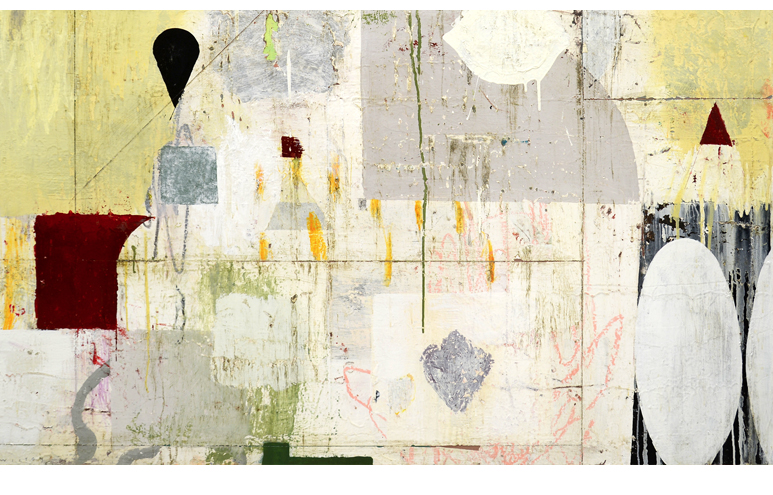 Do you ever notice when you are creating your art how often a small section of your art will look especially better than all the rest? If you could magically crop out this one part it would be possibly the best thing you have ever made? This happens to me all the time. It took me a number of years of observing this phenomenon before I began to understand why this was happening and – more importantly – how I could make the entire artwork, not just a small part of it, strong.
Do you ever notice when you are creating your art how often a small section of your art will look especially better than all the rest? If you could magically crop out this one part it would be possibly the best thing you have ever made? This happens to me all the time. It took me a number of years of observing this phenomenon before I began to understand why this was happening and – more importantly – how I could make the entire artwork, not just a small part of it, strong.
I noticed that this “small parts working thing” happened more to me in the earlier stages of my career, but it was only recently I realized why.
I wish I had understood this earlier. It would have helped my art, especially when I was just starting out. Maybe understanding how to correct this can help you now.
It actually is quite simple. In my teaching, when the art has only parts working and not the whole, I call it “Partitioning.” Many students have this happen in their work. On the one hand, it can be helpful or even reassuring when you finally make something that you absolutely love. It is so nice to be able to say definitively “yes” to something you have created. To achieve this, once in a while, can really invigorate your art practice. Who cares if it is only one small cropping in the lower right? At least we have something that we know we like.
When this keeps happening, however, it can become frustrating. We are, after all, trying to make a singular strong piece of art. Like most challenges in Art, it has to do one’s thinking – not some magical ability that some have and others don’t.
When we make our Art we tend to work on different sections, some areas we like and some we do not. If we can fix all areas then possibly we can make something we love. But it is in this preoccupation, this dogged determination to solve a problem area, correct or even worse “paint around what we love” that can cause partitioning.
Overly focusing on singular parts is at the root of the problem. Instead we need to go to those problem areas, but in changing them – actually while changing them – we must look at and consider all the other areas of the art. So in effect we are working on this close up view but simultaneously we are also considering the impact this change is having on the larger, distant view.
It is a little like a dancer being utterly spontaneous from within while dancing but also paying attention to the external expression, how they look from all the different angles while in front of an audience. Thinking of these two views and how they effect each other, looking at the big picture while you work on the small one actually changes the kind of marks, the answers you come up with to resolve the problem area in your art.
When an artist can hold both these views simultaneously, when they can expand their awareness, the work actually feels more expansive. The work becomes uncroppable. It is perfectly strong at the scale it exists. Nothing can be added or taken away to make it stronger.
Expanding our awareness, becoming more alive, more sensitive, is really at the heart of a vibrant art practice. Stopping the habit of focusing on parts instead of the whole will lessen partitioning.
In Life the more we can broaden our awareness, the more sensitive we can become, the more expansive our Art will become, and instead of just liking parts we will fall in love with the whole.
In gratitude, Nicholas
Why it Pays to be Bold, Early
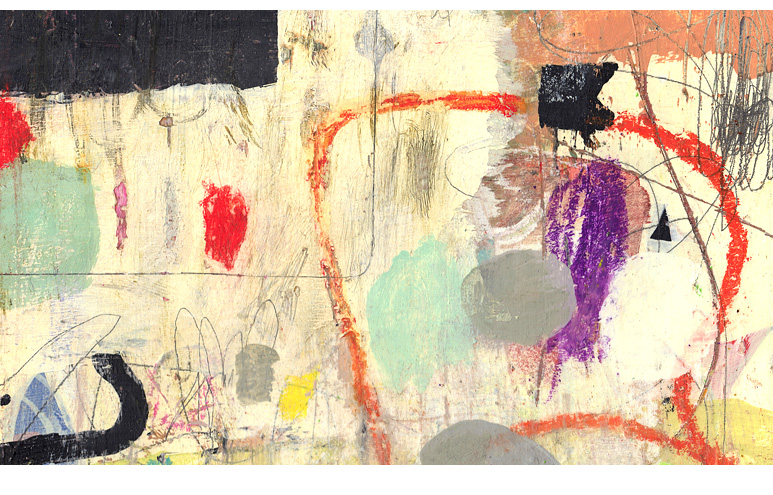 Beginning a painting of any kind of artistic expression is always hard. It is like that blank page when nothing has been written yet. The emptiness can be intimidating. It scares me sometimes. Personally, I would prefer to begin with something that has already been started.
Beginning a painting of any kind of artistic expression is always hard. It is like that blank page when nothing has been written yet. The emptiness can be intimidating. It scares me sometimes. Personally, I would prefer to begin with something that has already been started.
Everyone has a way of approaching his or her work, especially when they are just beginning. I would like to share with you how I approach my work, as it might be helpful to your practice. It has not only allowed me to make my work faster, it has also made the work stronger and the overall creative process more enjoyable.
It has to do with the central idea of being Bold in the beginning.
This sounds simple enough, but I have to always remind myself to be expressive in ways that are possibly bigger, more colorful or more different than I ever have before, especially in the beginning.
There are 3 reasons why.
#1 You are not attached
In the beginning you are not attached. Remember you are not getting married at this stage, just dating. Don’t fall in love. If you don’t you can change your work more easily. This flexibility is exactly what is required so that whatever you might have a hunch about making, some new angle or direction, can have a chance to be realized. It is simple: big risks and big changes don’t feel so big if there is not much to lose.
#2 You can be curious
If you find yourself able to be curious by what is happening in front of you, this is a good sign that you are entering a new unseen kind of terrain. This state of being interested and woken up by experiencing something new in your art heralds the first blush of Change. This Change almost always ends up improving your art. It is the gold standard, the highest bar an artist can achieve in their practice.
#3 You cannot go too far
Students have often asked, “ How far can I push my work?” I now believe, from firsthand experience in my own practice, that you almost never can go too far. Instead of driving the car quickly around the curvy mountain road, push yourself so much that you drive the car right off the cliff…then and only then will you know the limits of what is possible. Then – and this is an important point – you can pull back just a little so that the work is stable, but still on the edge of going too far. This is right smack dab where we want our work to be. Powerful work is to the max. There is nothing left unused. Remember that it is way easier to come back slightly than it is to creep tentatively forward in our work.
In the beginning of making Art there are few consequences from going too far. The only risk it seems to me is that in the beginning we don’t go far enough. Then our foundation, our starting place, is left somewhat half-baked. Trying to continue on with art that is only giving you half of its potential is exhausting. It is super hard to rescue your work from mediocrity the further down the road you go.
Art making, after all, is our practice. It teaches us about the intertwining of life and our art. In both, we need to step up, again and again – even if it is scary. Go for what you want, especially in the beginning. The two words I have on my studio wall remind me of this every time I make my art: “Don’t settle”
Note: “You are not marrying, only dating” is a quote from my financial mentor Tyrone Jackson. He uses this hilarious phrase to point out flawed attachments to certain equities, companies that one invests in. I see this advice perfectly relates also to art making.
In gratitude, Nicholas
Why it’s Great to be an Artist
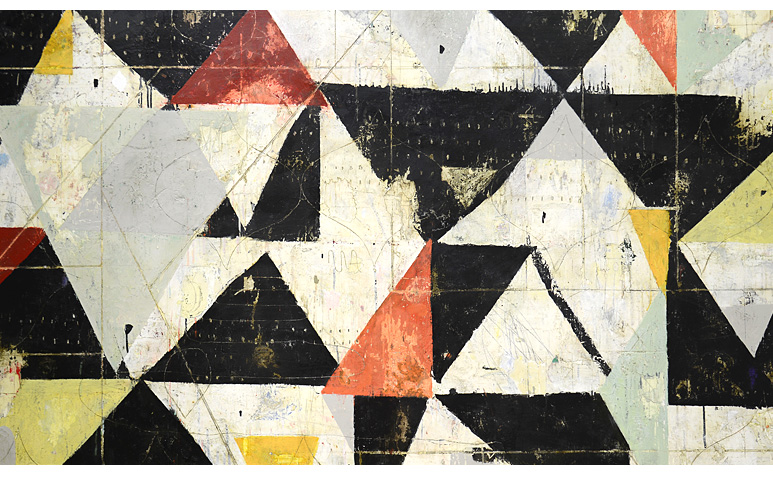 I get up super early these days and ride my bicycle to the studio. This time of year it is quite cold and almost dark when I start. There are not too many people up yet and sometimes I feel I shouldn’t be either. The cars that speedily pass me this early are most likely business people commuting into San Francisco.
I get up super early these days and ride my bicycle to the studio. This time of year it is quite cold and almost dark when I start. There are not too many people up yet and sometimes I feel I shouldn’t be either. The cars that speedily pass me this early are most likely business people commuting into San Francisco.
My doubts about why I am pedaling so early begin to fade as I turn off the busy road onto a stretch of bike path that goes along a wetland. The sun is coming up now and the water begins to shimmer. The egrets, gulls, stilts and pelicans are everywhere. The din of the traffic is gone. This path is mostly empty. In many ways this reminds me of what it is like to be an artist.
It is the path less taken.
Gratitude is too small a word to describe how fortunate I feel to be an artist. On this particularly beautiful morning there are so many reasons why.
Here are just a few.
I love that making Art teaches me about Life.
I love when you mix cadmium yellow light with phthalo green it feels like you’re standing in a tropical rainforest.
I love I don’t know where I am going but somehow I know when I am getting there.
I love that my favorite scraping tool was originally used by a dentist.
I love that making Art is about the exceptions instead of the rules.
I love that there are people in the world who understand and desire what I make.
I love that I can have any colors I desire.
I love that I have laughed out loud when making Art.
I love that sometimes I have cried.
I love that when I make my Art, I always hold on so tightly but when I am done, I have to let it go.
I love that artists are a tribe.
I love that a bad day can turn into a great day when you make Art you love.
Sometimes I pass another cyclist coming the other way on this beautiful stretch of bike path. Maybe it is because there are not many people on this path, or perhaps because they are feeling as I do, we always nod to each other. Sometimes it is just a small wave or a smile, but there almost always is a mutual acknowledgment.
There are just two of us here, moving through this extraordinary place at the same time. The sun is rising, everything is turning golden, there are birds everywhere and, not unlike the journey of an artist, for some miraculous reason most everybody else went the other way.
I love that too.
Why do you love being an artist?
Happy Thanksgiving!
